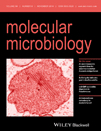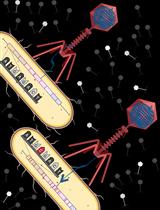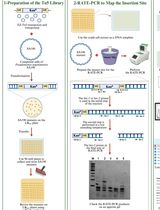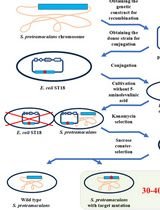- EN - English
- CN - 中文
Generating Isogenic Deletions (Knockouts) in Francisella tularensis, a Highly-infectious and Fastidious Gram-negative Bacterium
在高传染性和需要多种养分的革兰氏阴性菌-土拉弗朗西斯菌敲除突变株的获得方法
(*contributed equally to this work) 发布: 2015年06月20日第5卷第12期 DOI: 10.21769/BioProtoc.1500 浏览次数: 10574
评审: Fanglian HeManuela RoggianiAnonymous reviewer(s)
Abstract
Generating bacterial gene deletion mutants, also known as knockouts (KOs), is a powerful tool to investigate individual gene functions. However, fastidious bacteria such as Francisella tularensis (F. tularensis) often are difficult to genetically manipulate. Indeed, many different approaches have been tested to generate F. tularensis mutants. First, Tn5-based EZ::TN transposons have been successfully used to generate transposon libraries in F. tularensis (Qin and Mann, 2006; Weiss et al., 2007). However, creating a comprehensive transposon library with saturating mutations can be laborious, screening for gene disruption requires high-throughput assays where known phenotypes can be measured, and transposons may not completely inactivate the gene of interest or may alter downstream gene expression. Second, group II introns (also referred to as Targetron) have been used to inactivate F. tularensis genes of interest (Rodriguez et al., 2008; Rodriguez et al., 2009). Targetron functions by forming a complex between plasmid-encoded RNA and chromosomal DNA, followed by group II intron insertion into the gene of interest. The main advantage of Targetron is that it does not require an antibiotic resistance marker. However, as noted for transposons, targetron gene insertions may not eliminate all gene functions or may affect downstream gene expression. Third, homologous recombination can be used to completely replace the chromosomal target gene with a selectable marker, such as an antibiotic resistance marker. This classical genetic technique has been used in many F. tularensis studies (Ramakrishnan et al., 2008; Ren et al., 2014; Mohapatra et al., 2008; Robertson et al., 2013). To accomplish this, a suicide plasmid is engineered to include a selectable marker flanked by regions upstream and downstream of the gene of interest. This KO plasmid can be delivered into host bacteria by many methods, including electroporation, chemical transformation, or conjugation. Here, we describe an optimized procedure to generate KO plasmid constructs, use E. coli to conjugatively transfer the plasmid into F. tularensis, select for F. tularensis KOs using a series of kanamycin-, hygromycin-, and sucrose-resistance steps, and confirm that the gene of interest has been deleted (general overview of the knockout protocol diagramed in Figure 1). This optimized procedure is relatively simple, rapid, and, more importantly, includes a series of both positive and negative selection steps to increase the chances of deleting a target gene from F. tularensis.
Keywords: Francisella tularensis (土拉弗朗西斯菌) 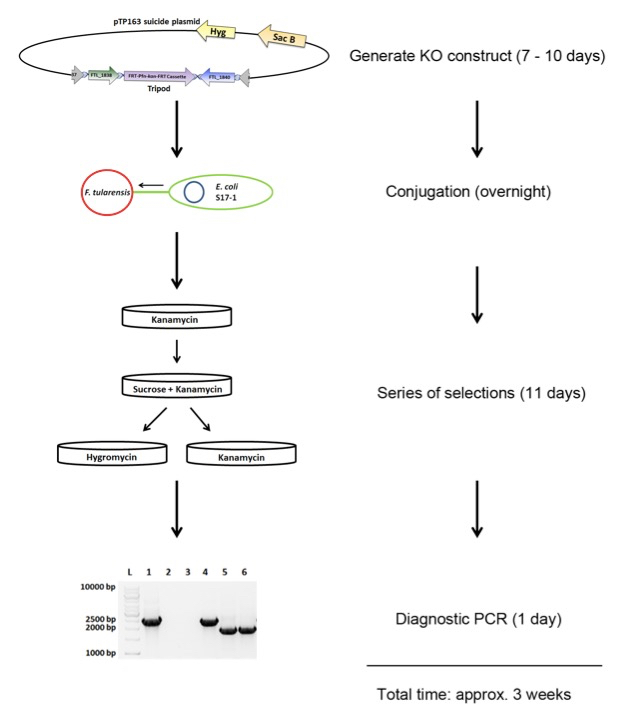
Figure 1. General overview of knockout protocol
Materials and Reagents
- Francisella tularensis, including subsp. tularensis (Type A; e.g. SchuS4) or subsp. holarctica (Type B; e.g. LVS)
Note: This protocol has been demonstrated to work in F. tularensis strains SchuS4, LVS, and OR96-0246 (Type B). All strains available from BEI Resources.
- Trizol (Life Technologies, catalog number: 15596018 )
- Platinum Taq DNA Polymerase High Fidelity (Life Technologies, catalog number: 11304-011 )
- pLG66a (Gallagher et al., 2008)
- QIAquick PCR Purification Kit (QIAGEN, catalog number: 28106 )
- QIAquick Gel Extraction Kit (QIAGEN, catalog number: 28706 )
- Agarose (Lonza, catalog number: 50004 )
- Ethidium bromide, 1% solution (Fisher BioReagents, catalog number: BP1302-10 )
- pTP163 (suicide KO plasmid; Robertson et al., 2013)
- LB broth (Fisher BioReagents, catalog number: BP1426-2 )
- Glycerol (Fisher BioReagents, catalog number: BP2291 )
- Bacto agar (Becton Dickinson, catalog number: 214010 )
- Hygromycin B solution (50 mg/ml) (Corning, catalog number: 30-240-CR )
- QIAprep Spin Miniprep Kit (QIAGEN, catalog number: 27106 )
- Apa I restriction endonuclease (New England Biolabs, catalog number: R0114L )
- Antarctic Phosphatase (New England Biolabs, catalog number: M0289S )
- T4 DNA ligase (New England Biolabs, catalog number: M0202S )
- NEB-10 beta chemically competent E. coli (New England Biolabs, catalog number: C3019I )
- Kanamycin monosulfate (MP Biomedicals, catalog number: 194531 )
- GoTaq Green Master Mix (Promega Corporation, catalog number: M7128-C )
- Molecular Biology Grade Water, DNase-, RNase-, and Protease-free (Corning, catalog number: 46-000-CM )
- E. coli strain S17-1 (Simon et al., 1983; generous gift from Drs. Michael Norgard and Greg Robertson, U.T. Southwestern Medical Center, Dallas, TX)
- Calcium chloride dehydrate (Fisher BioReagents, catalog number: BP510-100 )
- Mueller Hinton Broth powder (Becton Dickinson, catalog number: 211443 )
- Tryptone (Fisher BioReagents, catalog number: BP1421-500 )
- Sodium chloride (Fisher BioReagents, catalog number: BP358-212 )
- IsoVitaleX Enrichment (BD, catalog number: 211876 )
- Glucose (Fisher BioReagents, catalog number: BP350-1 )
- Iron(III) pyrophosphate (Sigma-Aldrich, catalog number: P6526-100G )
- Phosphate-buffered saline (PBS) 1x, without calcium and magnesium (Corning, Mediatech, catalog number: 21040CV )
- Membrane filters, 0.025 µm, 25 mm (EMD Millipore, catalog number: VSWP02500 )
- Hemoglobin powder (Neogen Acumedia, catalog number: 7195 )
- Polymyxin B sulfate (MP Biomedicals, catalog number: 100565 )
- Magnesium chloride hexahydrate (Fisher BioReagents, catalog number: BP214-500 )
- D-Sucrose (Fisher BioReagents, catalog number: BP220-212 )
- Sodium hydroxide (Fisher BioReagents, catalog number: BP359-500 )
- LB broth (see Recipes)
- LB agar (see Recipes)
- Supplemented Mueller Hinton Broth (sMHB) (see Recipes)
- Supplemented Mueller Hinton Agar (sMHA) (see Recipes)
- Chocolate agar plates containing hygromycin and polymyxin B (see Recipes)
- sMHA containing 10 mg/L kanamycin and 8% sucrose (sMHA-kan10-suc) (see Recipes)
Equipment
- Applied Biosystems Veriti 96-Well Thermal Cycler or thermal cycler with ramp rate > 3 °C/sec
- Thermo Scientific MaxQ 6000 Incubated/Refrigerated Stackable Shakers
- Thermo Scientific Forma Steri-Cycle CO2 Incubators
Procedure
文章信息
版权信息
© 2015 The Authors; exclusive licensee Bio-protocol LLC.
如何引用
Wu, X., Ren, G. and Huntley, J. F. (2015). Generating Isogenic Deletions (Knockouts) in Francisella tularensis, a Highly-infectious and Fastidious Gram-negative Bacterium. Bio-protocol 5(12): e1500. DOI: 10.21769/BioProtoc.1500.
分类
微生物学 > 微生物遗传学 > 诱/突变
分子生物学 > DNA > 诱/突变
您对这篇实验方法有问题吗?
在此处发布您的问题,我们将邀请本文作者来回答。同时,我们会将您的问题发布到Bio-protocol Exchange,以便寻求社区成员的帮助。
Share
Bluesky
X
Copy link



